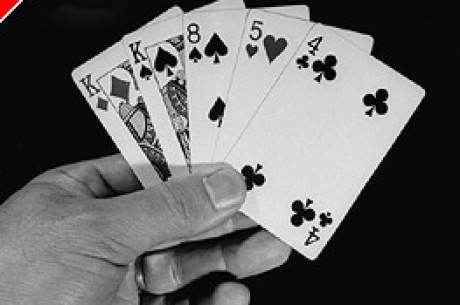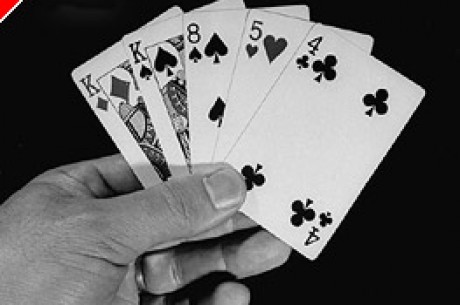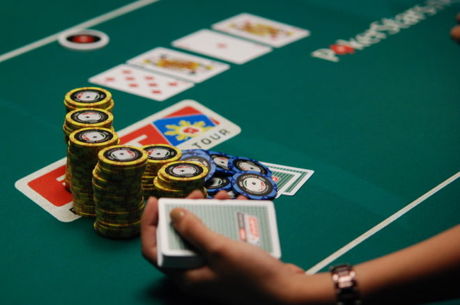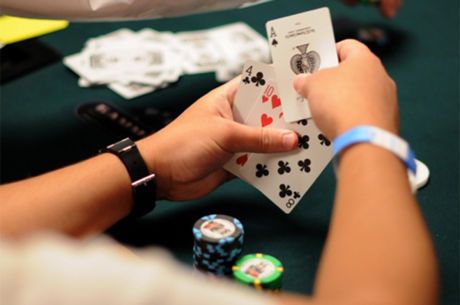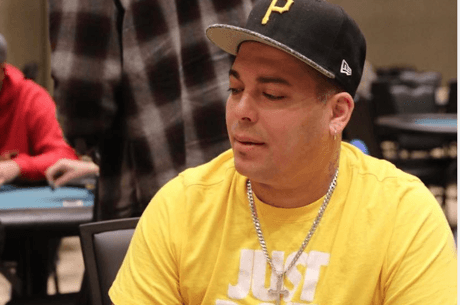Introduction to Omaha Part IV-Anatomy of a Low Hand
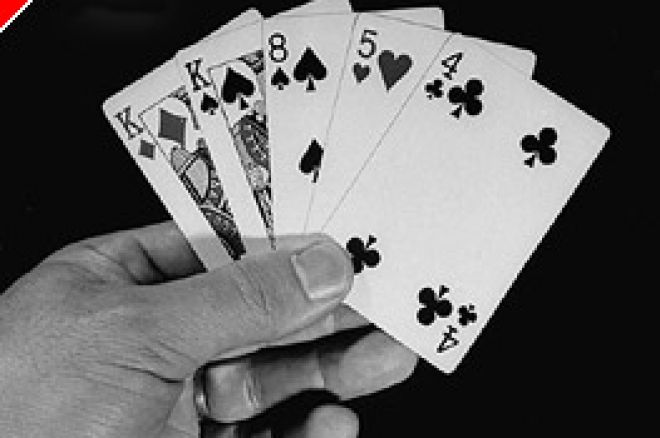
Introduction
This is my fourth article for on-line players new to the poker game of Omaha. I am based in England and play most forms of on-line poker on a regular basis so I hope to pass on my experiences to you to help your own quest for profitable play.
In this article, I take a more refined look at the low hand in a game of Omaha Split (or Hi/Lo, or Eight and Better), following on from the last article which merely outlined what it is and its relation to the high hand.
Pieces of Eight
As explained in Article 3, the low hand comprises five cards all of which are of different values (that is, no pairs) included in the following set; 8, 7, 6, 5, 4, 3, 2, A. It exists regardless of the suits of the cards and regardless of the sequence of the numbers. Flushes and straights are irrelevant for the low hand. Of course, you must remember that the very same cards can make a straight or flush for the purposes of deciding who has the best high hand. Keep in mind that you are playing two sets of rules with the one set of cards. If you cannot make a hand of five unpaired cards "8 and better", you do not have a qualifying low hand.
Here is an axiom to consider and commit to memory: If the five community cards show at least three cards from the following set; K, Q, J, 10, 9, no player will have made a low hand. Only a high hand will decide the winner and the whole pot goes to that person. Any reason you had for solely betting on the strength of your low cards has gone and you can muck the cards. If all three cards on the flop comprise 9 to K cards, you can immediately save your money in the absence of a very strong high hand which has been helped by the flop.
As previously mentioned, there should not be too many times when you are in the pot (or half-pot) simply for the low hand. It isn't "economically viable", as someone once said in a movie.
A2 or not A2, that is the question
While Shakespeare won't have intended such flagrant abuse of his prose, this is a question you should ask yourself when playing Omaha Split. The nut low hand is 5, 4, 3, 2, A. In fact, any hand ending in A, 2 where you hold the A, 2 in your hole cards is intrinsically desirable, but there are certain caveats to learn before you charge ahead and bet.
Quartering
It is not uncommon on a table of 10 players for two, and sometimes three, of them to be in possession of A, 2 in the hole. It is certainly common enough for two people to hold A, 2 to make it a factor in your decision-making should you be one of them. You will find most players will not fold A, 2 until they are certain they will not qualify for the low hand by virtue of the board showing three cards of 9 to K.
Because suits and straights do not affect a low hand value, any matched low hands at showdown split the low-hand pot which is already only worth half the total pot available. This is called being quartered (meaning you get a quarter of the total pot). If the bulk of the pot was built up between you and one or two others only, you will probably have lost money overall. This is why you should always start betting only if your hole cards give you a sporting chance of the making a good high hand.
Counterfeiting
If your only low cards of note amongst your four hole cards are A, 2, then you run the risk of being made worthless by the law of "counterfeiting". This occurs when one of your low-hand hole cards is matched by one appearing on the board. This potentially nullifies the nut status of your low hand because someone holding A, 3 or even higher has you beat for the low unless you also hold such a card in the hole in addition to your A, 2.
For example, you are dealt Ah 2c 7d Js. You decide to bet out on the low hand potential (ignore for now whether you really should bet at all). The flop comes 5s 6d 8c. You have the nut low! You feel you might win half the pot so you decide to bet out strongly. Three others call you. The turn is Qc. Well, you have nothing threatening the high hand contenders but your low is still the nuts. You come out strongly again. The river is 2h.
Do you carry on betting because you still have the nut low? Do you still actually have the nut low? The answer is "No" in both cases.
Your high and low hands are as follows:
High: 2c 2h Ah Qc 8c (comprising 2c Ah in the hole and 2h Qc 8c from the board)
Low: 7 6 5 2 A (comprising 7d Ah in the hole and 6d 5s 2h from the board)
Your 2 in the hole has been counterfeited by the 2 on the board. Remember that a low hand cannot contain a pair. If you therefore use your A, 2 from the hole, you can only make a low hand using 5, 6, 8 from the board. That is 8 high and is a worse low hand than the 7 high you can now make.
The problem has arisen because a 4th low card hit the community board giving more scope to other players to mix and match their own cards. While only the 8, 6 and 5 were the low cards on the board, everyone had to use their lowest two cards in the hole that were different to 8, 6 and 5. Those with A, 2 were in the driving seat. When another 2 came down, this changed the composition and gave greater choice to players. Consequently, you can now be beaten by any player still betting who has any two of A, 3 or 4 in their hole cards:
The 6, 5 and 2 on the board provide them with a 6 high low hand against your inferior 7 high low hand.
Wheel of Fortune
You might deduce from the foregoing that you would get around the problem of counterfeiting by having a wider choice of low cards in the hole, especially A, 2, 3. You would be very right!
The nut low hand is 5, 4, 3, 2, A. This is known as the "Wheel". It is a nice hand to get in Omaha Split because it will often scoop you the high hand too unless someone has the right combination of cards with a 6 in the hole or there is a flush or full house about.
Consequently, as a relative newcomer to the game, and bearing in mind the fundamental lessons spelt out in the previous three articles, you want to consider starting hands that either are full of strong high cards, eg A K K J; A A Q 10, or those with excellent low and high possibilities, eg A A 2 3 (the daddy of Omaha Split hole cards), A 2 3 K; A 2 3 4; A 2 4 5.
Notice that an ace is almost mandatory because if you were to receive 2 3 4 5, you know that, at a table of 9 or 10, about 75% of the deck makes up the hole cards meaning an average of 3 aces are held by other players. This leaves you needing an ace on the board to have a fair chance of making the low hand and statistically, there is only one left with the dealer. Your best low hand currently ends with 2 3 and so you are beaten already by any A 2 and any A 3 unless a stray ace hits the board to counterfeit those holding one.
So you must go easy with those 2 3 hands. They are deceptively weak. To be certain of the nut low, you need both the A and a 4 to hit the board along with any one of 5, 6, 7 or 8. Not as common as you might hope. Hands with 2 3 in them also don't lend themselves to good high hand possibilities. You can be easily outdrawn for the high hand straight with such a low sequence.
Conclusion
At the low levels of limit poker that you should currently be playing, you will find most of those at the Omaha Split table favour the low hands and will bet them strongly. There is a fatal attraction to the A 2 combination, and also the A 3, 2 3 and even weaker holdings like 3 4. This is primarily because there is an outside possibility of making the Wheel which is the nut low hand and a good high one.
Where you should take advantage at the Omaha Split table is the propensity of many players to think of A, 2 as the best hole cards they can get. Frankly, A, 2 is not a promising start for the high hand in Omaha without help from the other hole cards. You should try to resist getting involved in them if the other hole cards are rags for the high hand. You are potentially throwing away half of your money into the pot for someone else if you have no intention of fighting for the high hand and possibly risking the other half without protection from the law of counterfeiting. Instead, you should be trying to get at the high hand pot which will have been generously inflated by half of the bets made by the low hand chasers.
We now know the best hand of all at Omaha Split is A A 2 3. Next time, I will take a look at some of the best hands in Omaha High.
Exorcism
27 April 2005
Please visit our online poker room directory to see the best bonuses on the web!

